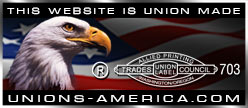July 29, 2014
Aircraft Maintenance Technicians (AMTs) have an awesome responsibility entrusted to them, but it is also an inherently dangerous job. Many of us have heard of or seen close calls where injury or death was imminent. I would like to discuss some recent incidents.
In the mid 1990’s at Dee Howard, a MRO in Texas, an AMT was doing a routine card on the thrust reversers of a Boeing 757. During his maintenance, he had to place his body halfway in the reversers to get access to the components he was replacing. Because of norms, complacency and other factors, he did not go into the cockpit to ensure that there were lockout tags on the controls and the hydraulics. Someone in the cockpit was doing checks in another area and activated the hydraulics, resulting in the AMT being crushed to death.
In January 2006 in El Paso, Texas, an AMT was sucked into a jet engine as he and other technicians looked for an oil leak. The AMT had stepped into a designated hazard zone near the engine. He was doing a leak check on the engine at 70%. This was a failure of the mechanic to follow written procedures and directives.
Another accident occurred in Minneapolis in 2010 where an AMT was caught in the nose landing gear doors of an Airbus A319. The AMT was working on the nose gear of the aircraft when he somehow got trapped in the gear doors. When emergency crews arrived at around 5:30AM they found him lying at the wheels of the aircraft – he had no detectable pulse.
In 2010 there was an incident at SWA involving the collapse of a nose gear. Two AMTs received minor injuries; however, the incident could have been much worse. One of the AMTs was pinned in the nose gear wheel well and could have been crushed were it not for some lucky circumstances.
There are lots of safety procedures when maintaining aircraft. In our manuals we have three levels of warning:
• WARNING – is something that could kill, seriously injure, or cause significant damage to the aircraft or equipment
• CAUTION – is something that will likely cause injury or damage
• NOTE – is an advisory of things to be aware of, but unlikely to result in injury or damage
Anything that involves moving parts usually has a WARNING as most are hydraulically or electrically powered. When working in these areas you are normally instructed to deactivate the system, install safety lock pins, and placard the controls so they are not inadvertently operated. These procedures works well if people adhere to the instructions, but human nature and short cuts leads to complacency and errors due to either being lazy or rushing the job. Just like an aircraft crash there is usually a sequence of events that lead up to a tragedy on the maintenance floor.
These are some of the reasons we need to have a continual talk with our AMTs about safety, the dangers involved and how we can prevent them. Read your AMMs and refer to them every time you do a job. Follow the warnings and be safe as we don’t want to hear about one of our members being hurt or injured, or having us injure someone else.
David Brooks
National Safety & Standards Director
